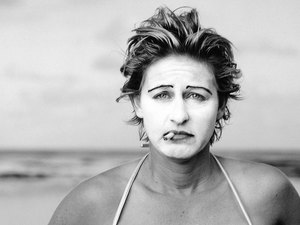
Image Credit: Ellen DeGeneres, Kauai, Hawaii, 1997, photographed by Annie Leibovitz via NPR
At the end of October, the National Portrait Gallery in
Washington, D.C. opened “Hide/Seek: Difference and Desire in American
Portraiture.” The new exhibition features gay and lesbian artists and portraits
of prominent figures in the gay community.
As noted by NPR, the exhibition, given the location and the
involvement of federal funds, marks a “landmark achievement.” With a tinge of
pride, the Gallery states that “this is the first major museum exhibition to
focus on sexual difference in the making of modern American portraiture.”
Focuses include “how artists explored the fluidity of sexuality and gender; how
major themes in modern art—especially abstraction—were influenced by social
marginalization; and how art reflected society’s evolving and changing attitudes
toward sexuality, desire, and romantic attachment” (National Portrait
Gallery).
As the phrase “Hide/Seek” indicates, the project seems to
oscillate between emphasizing various forms of “desire” and highlighting a
poignant sense of public and private struggle. Tellingly, the above image of
Ellen DeGeneres as photographed by Annie Leibovitz opens the exhibition’s
website and emphasizes what arguably appears as the contemporary gay
mainstream. A closer look at the images on display reveals a who’s who of
iconic artists and intellectuals: Walt Whitman, Robert Maplethorpe, Susan
Sontag, Frank O’Hara, Andy Warhol, etc. Yet, the project also features images of lesser-knowns including those lost to the AIDS epidemic.
The works of art in the exhibition are grouped
along crucial periods of public gay definition, including “Before Difference,”
“Stonewall and After,” and “AIDS,” which allows the exhibition to function as a documentation
of gay rights. Given the National Portrait Gallery's position as a federally-funded Smithsonian museum, such historicizing and legitimizing moves take on added political significance.
Visit the websites linked above for soundslides and a closer look at the gallery. The exhibition runs through mid-February.

Recent comments
2 years 29 weeks ago
2 years 44 weeks ago
2 years 44 weeks ago
2 years 50 weeks ago
3 years 4 weeks ago
3 years 4 weeks ago
3 years 4 weeks ago
3 years 6 weeks ago
3 years 6 weeks ago
3 years 6 weeks ago